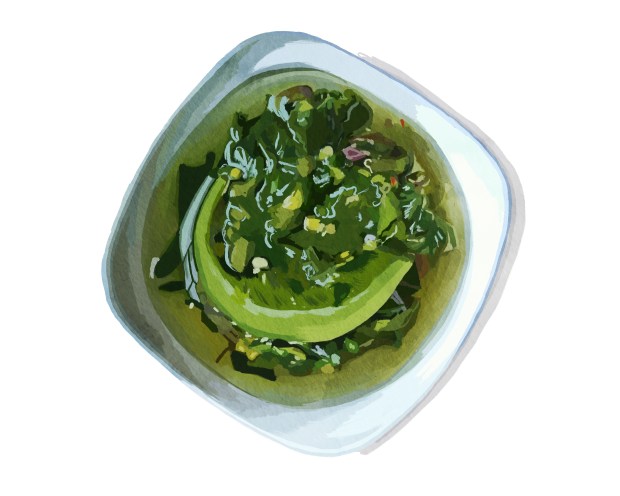Indonesians like to joke that wherever you go throughout the country’s 17,000 islands, you will find someone selling Padang food. Named for the capital city of West Sumatra, Padang food owes its reach to the peripatetic Minang people, who have settled across the archipelago, bringing their delicious food with them. Though Padang recipes are often adapted slightly to local tastes and produce—the farther east you go, for example, the more likely you are to find Chinese-influenced dishes—there are a handful of classics you’re likely to find at almost any Padang eatery.
Rendang
Rendang is a slow-cooked curry that is most commonly made with beef. The name refers to the slow-cooking process: The curry sits over low heat for up to eight hours, or until the coconut milk begins to caramelize. True rendang should be dark brown or black (it is referred to as kalio when served too soon, typically soupier and deep red). Some cooks add roasted coconut shavings into the mix to further darken the color.
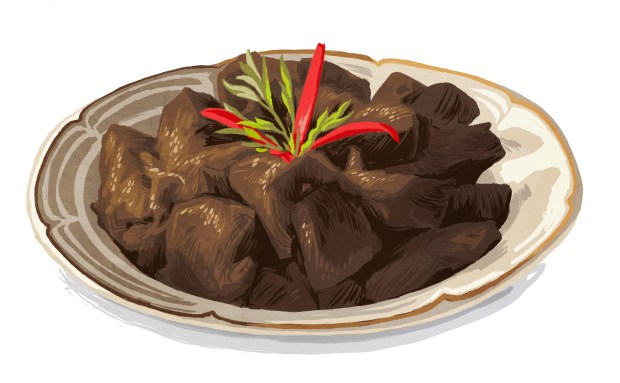
I’m told that due to the way it is cooked and the serious amount of spice it contains, rendang can last for weeks without refrigeration, making it a favorite portable meal for Indonesian Muslims making the hajj to Mecca. Beef is the favorite choice for rendang, but chicken is also popular. In West Sumatra you can also find vegetarian versions with cassava, mushroom, and jengkol (a strong-smelling bean).
Though many of the spices and leaves that go into rendang—cumin, cloves, nutmeg, pepper, cinnamon, lemongrass, salam leaf, lime, and turmeric—are indigenous to Indonesia, many others—star anise, fennel, cardamom, and asam kandis (a sour fruit)—are believed to have come to Sumatra through Indian traders centuries ago.
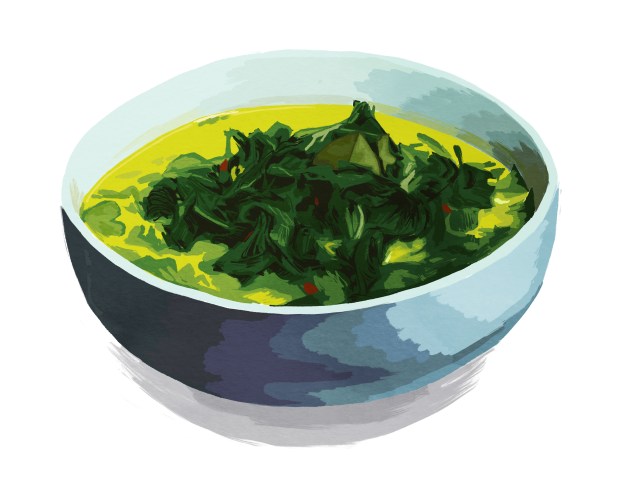
Gulai daun singkong ikan teri
Gulai is a bright-yellow curry with deep-green cassava leaves and crispy, tiny dried anchovies. It’s rich, creamy, salty, and your rice will just soak up the flavors. Word to the wise: Cassava leaves must be boiled at least once before they are added to the coconut milk and spice mix—otherwise they are shockingly bitter.
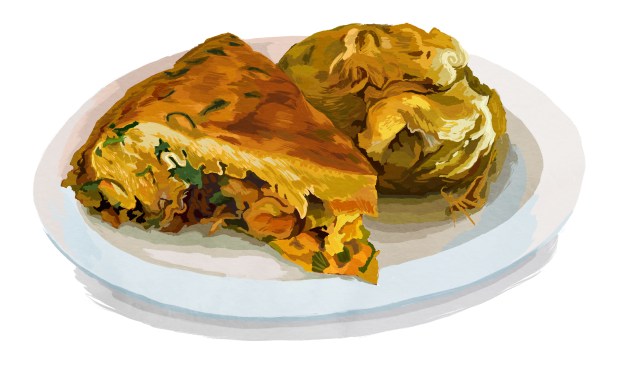
Telor dadar padang
This is no ordinary omelet. It’s a huge slab of fried, eggy mixture, exploding with spring onions and chunks of red chilies. Unlike the common, flat, and typically ungarnished telor dadar omelet, the Padang version tends to be more than an inch thick and a deep orange in color. Crunchy on the outside thanks to the frying process, the inner layers are soft and springy. Soak it in some of your leftover rendang sauce—it’s a heavenly combination.
Dendeng balado
Balado refers broadly to anything that is stir-fried in a rich tomato, chili, and red shallot paste. The Padang classic is dried strips of beef that have been thinly sliced and preserved in sugar and spices. The end result is a sort of stir-fried beef jerky. (Eggplant, potato, and tofu are also popular balado ingredients.)

Most of the chilies are the large red ones—and decidedly less hot than their tiny bird’s-eye cousins. But, for the braver souls among us, a green-chili version is often also available.
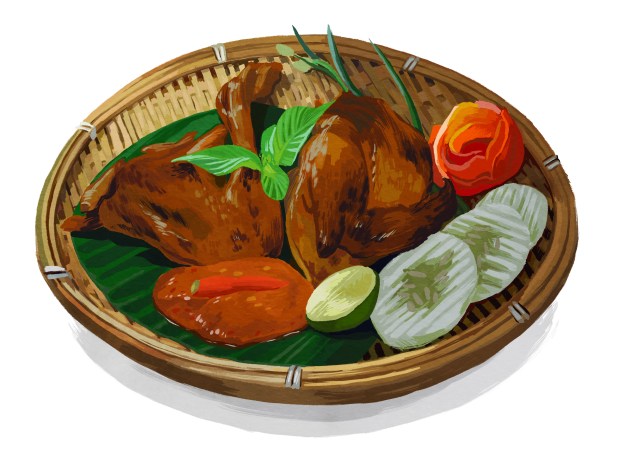
Ayam bakar padang
Seriously savory and coated in a red spice paste, ayam bakar padang is a smoky delight. Marinated in lime juice, salt, and pepper, this chicken dish—you can choose between breast and thigh meat—is cooked with lemongrass, lime leaves, turmeric, chilies, and galangal (a citrus-tasting root that resembles ginger) before being barbecued over hot coals. It’s a great dry dish to balance out the soupiness of some curries.
Sambal cabe hijau
Green-chili sambals (sauces) tend to be very spicy, as they are made with small green chilies (cabe rawit hijau). The Padang version, made with large green chilies (cabe hijau), is slightly milder; and while the heat undeniably builds up over the course of your meal, it won’t leave you in tears. Other ingredients include red shallots, garlic, green tomatoes, lime leaves, sugar, salt, and of course plenty of oil to fry it in. This sambal goes particularly well with rendang—the sourness of the green tomatoes cuts through some of the richness.
